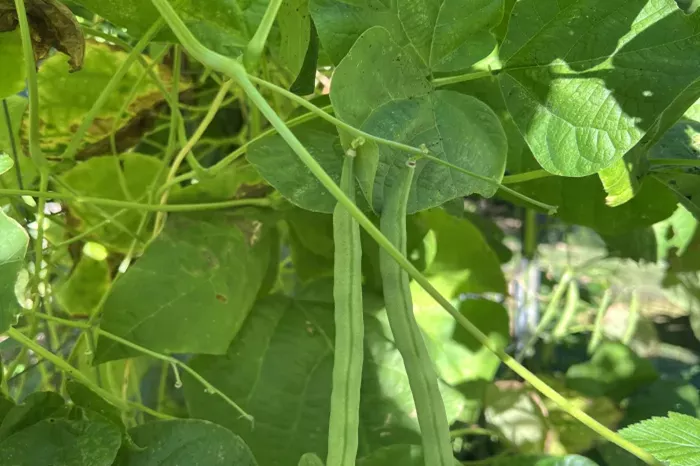Beans can provide a continuous harvest until the end of the season with minimal care, especially once they are well-established. Healthy plants will keep delivering fresh beans for your meals until the arrival of cold weather.
Optimal Harvesting Times
Green beans, also known as snap beans or wax beans, are best picked while they are still small. Allowing them to mature too long causes the beans inside the pods to lose their sweetness. “Regular picking encourages the plant to keep producing more beans,” says Chris Ramos from Blain’s Farm and Fleet. “Harvesting the beans while they’re still tender stimulates the plant to develop additional pods.”
Harvest Duration
In ideal conditions, harvesting can continue until the first frost or until the plant’s health declines due to reduced daylight.
Bush vs. Pole Bean Varieties
Pole Beans: These beans grow several feet tall and often require stakes or trellises for support. They need regular harvesting to keep producing and will continue to blossom and bear pods until the first frost or until the plant faces damage or disease. Gardens with pole beans can enjoy a steady harvest over several months.
Bush Beans: Bush beans grow to a certain height and produce all their beans within a short period, typically 4-6 weeks, before ceasing production for the season. After the main harvest, bush beans do not produce much more. They are more suitable for climates with shorter growing seasons. For continuous harvest, gardeners often use succession planting.
Continuous Production in Pole Beans
Pole bean varieties offer continuous flowering and pod production as long as conditions are favorable. They require adequate sunlight, warm soil temperatures, and proper moisture to keep producing.
End-of-Season Decline
As the growing season advances, several factors cause green bean plants to slow down. Shorter days, cooler temperatures, and the exhaustion from months of production can lead to reduced pod growth. Beans harvested late in the season may be smaller, slower-growing, and less tender.
Factors Affecting Production
Temperature and Frost: Beans thrive in warm weather, with ideal temperatures between 70-85°F. Cooler temperatures and frost can significantly slow down pod growth and may end the harvest. In frost-free regions, green bean plants may produce for a longer period before declining.
Sunlight: Green bean plants require 6-8 hours of direct sunlight daily. As daylight hours shorten towards the season’s end, reduced light can slow down flowering and bean production.
Watering and Nutrients: Mature plants need about an inch of water per week. Water deeply but infrequently to prevent root rot. Fertilize the soil at the beginning and mid-season to support growth and bean production.
Pests and Disease: Pests like aphids and spider mites, as well as diseases such as rust, can weaken plants over time. Keeping plants healthy and managing pests can extend the growing and production period.
By understanding these factors and applying proper care, you can maximize the productivity of your green bean plants throughout the growing season.


